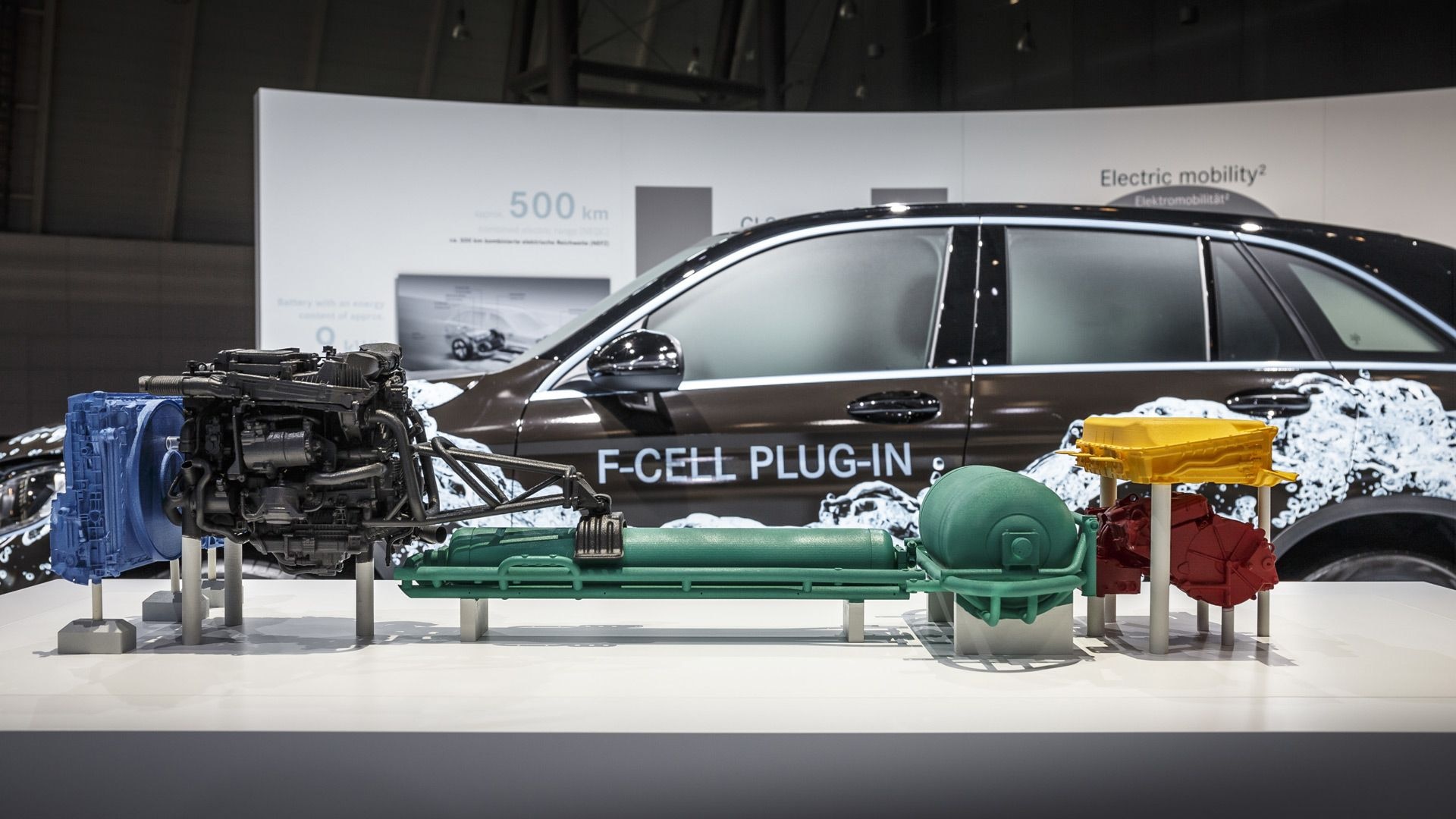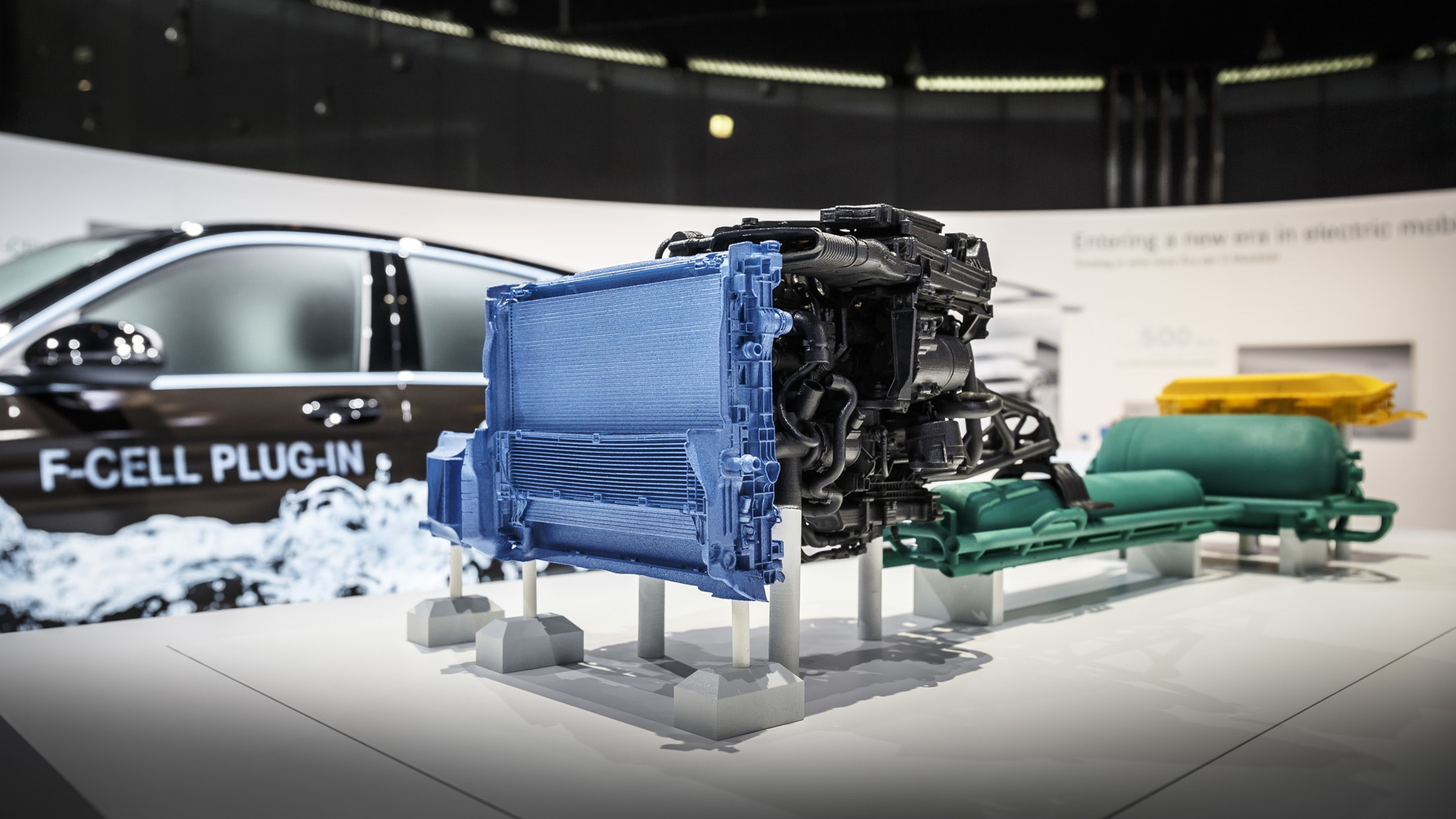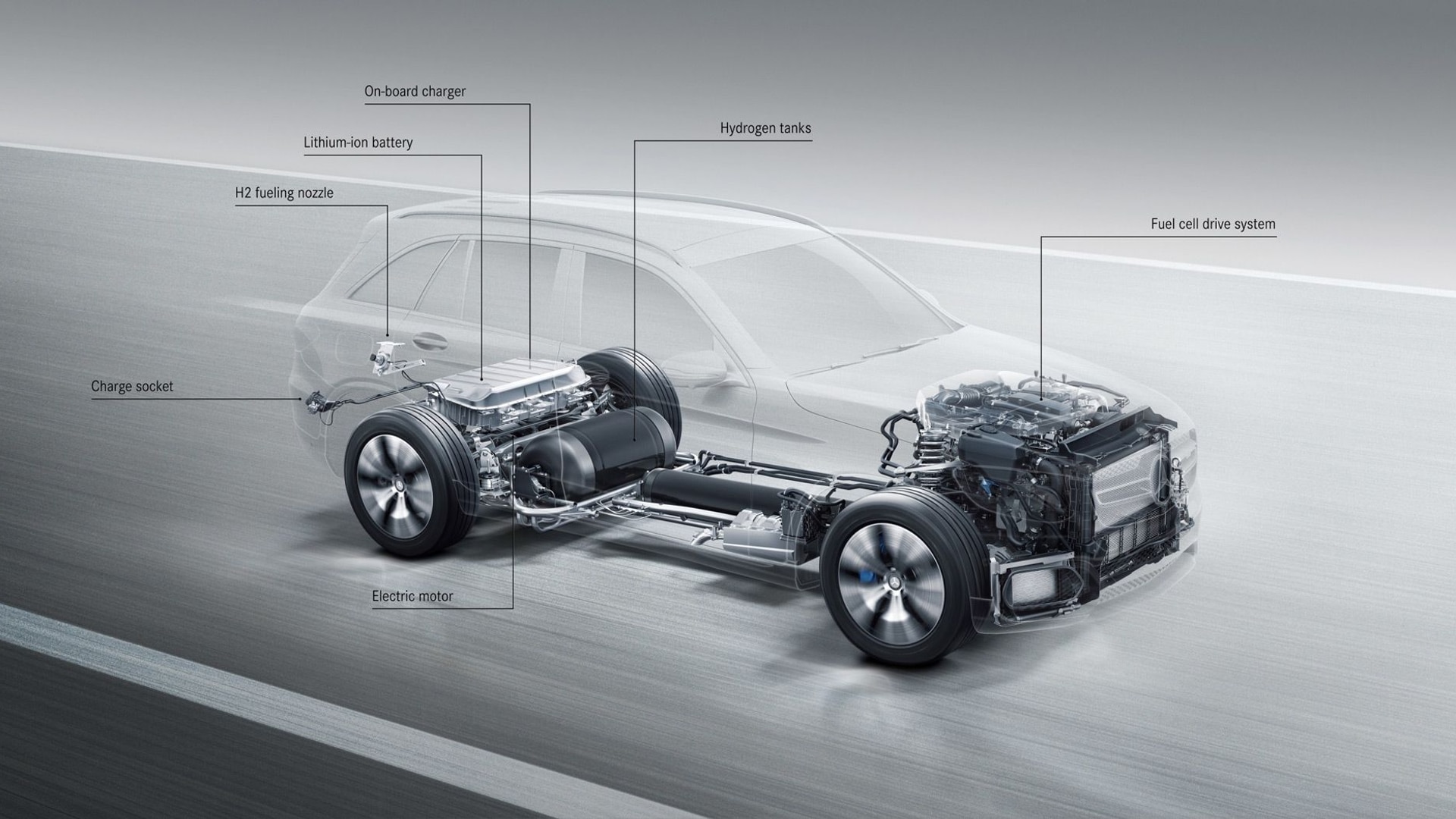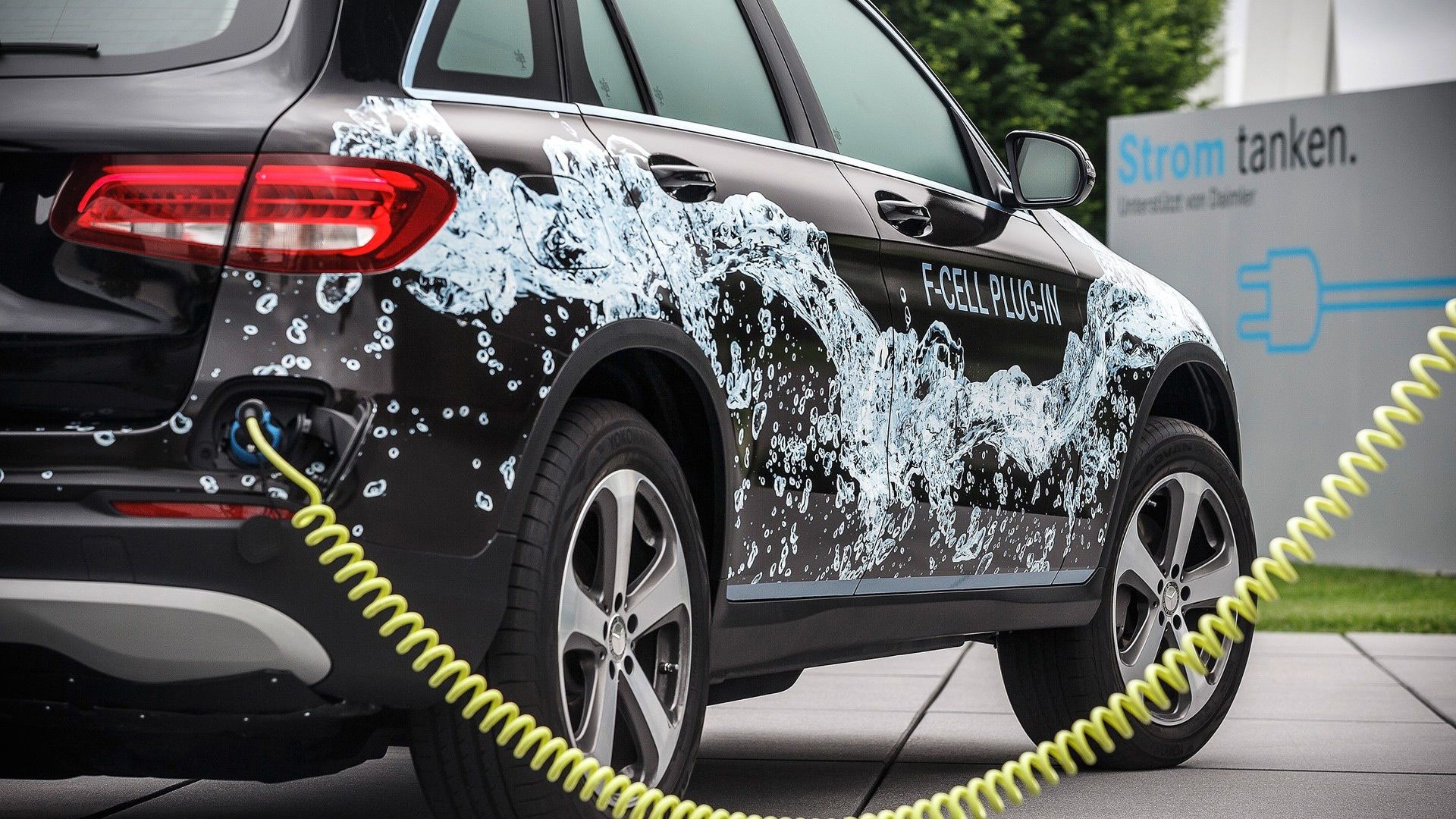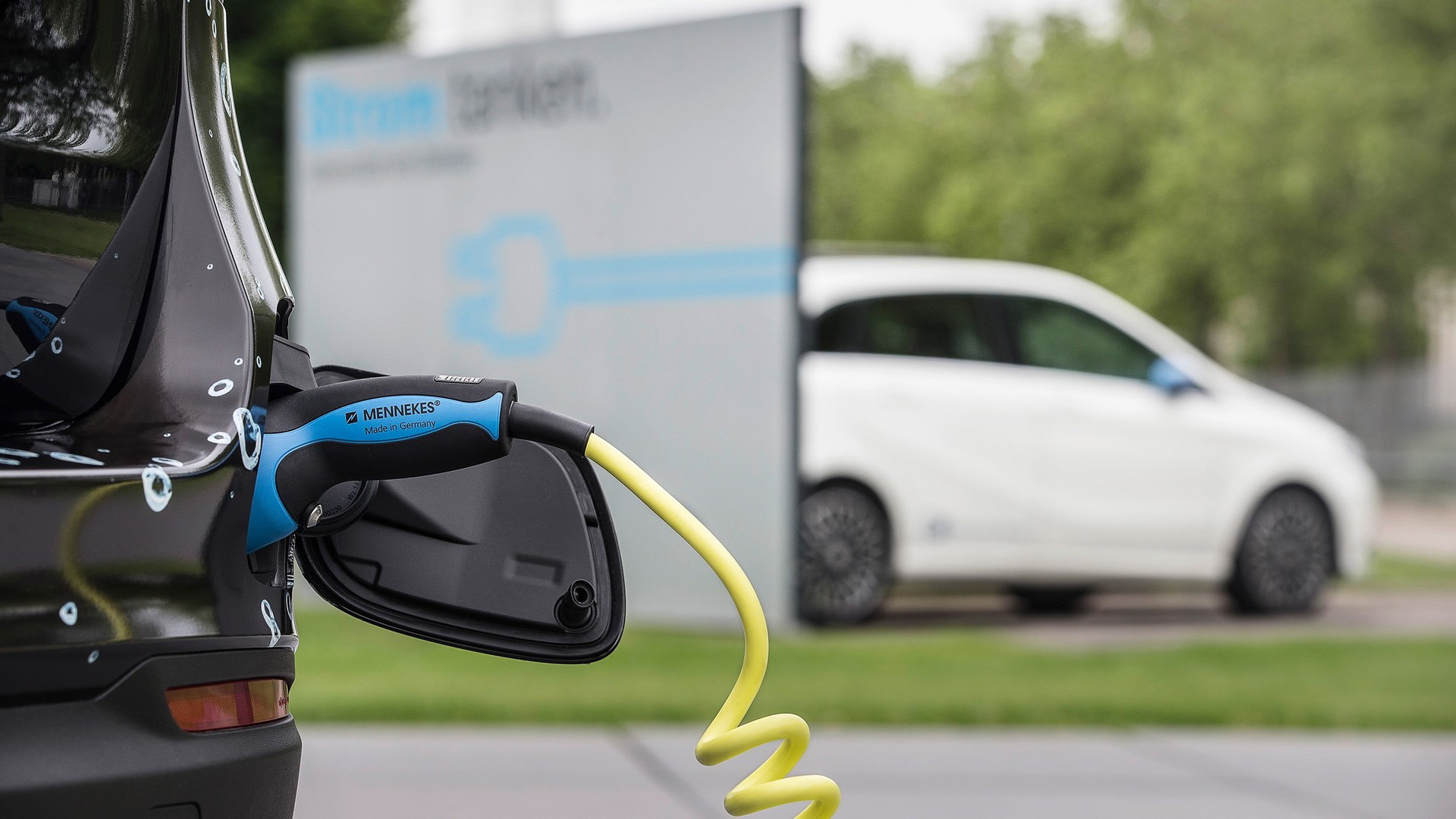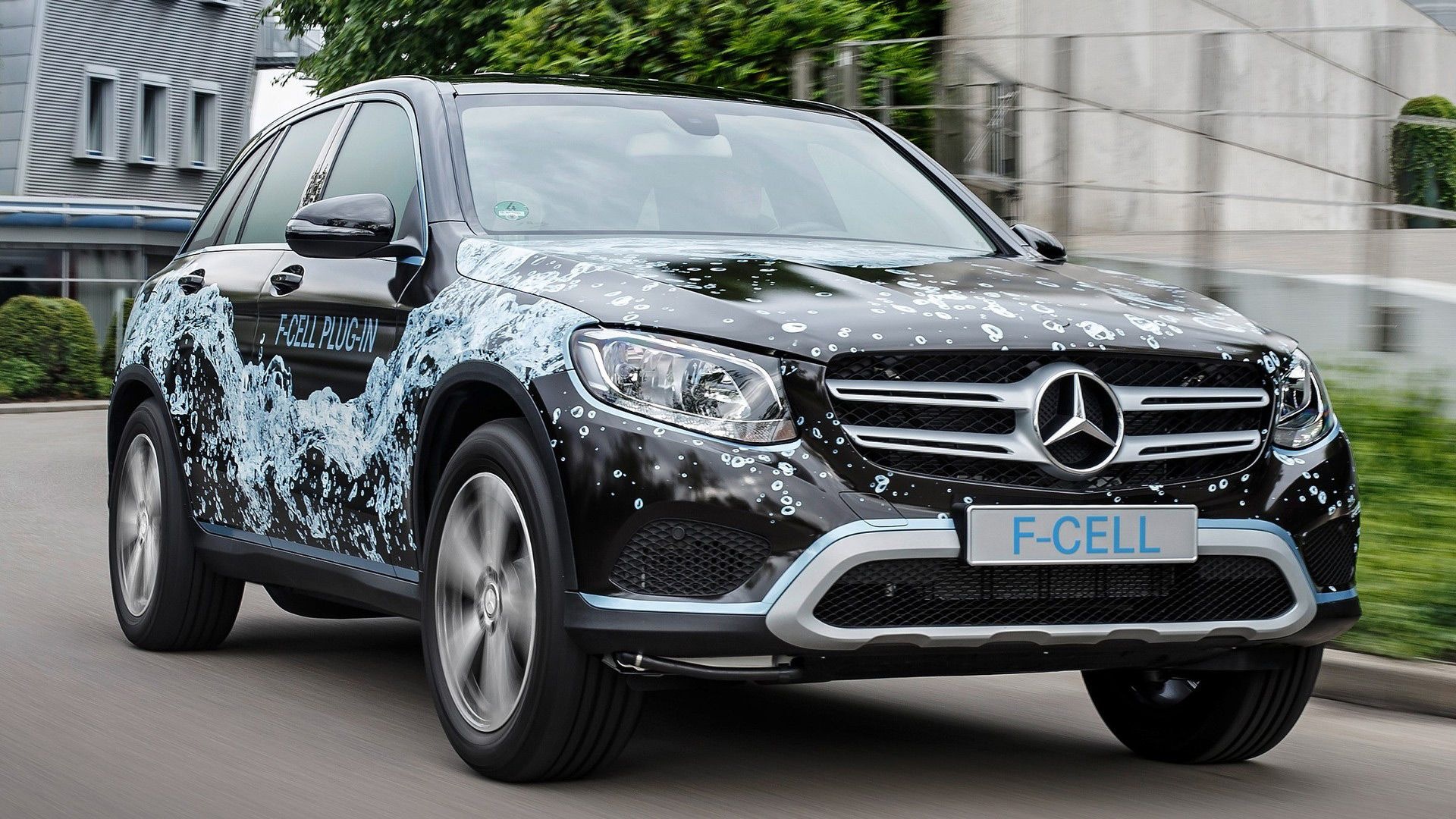This morning, Mercedes-Benz announced that its upcoming GLC F-Cell hydrogen fuel-cell crossover SUV would also include a battery pack that plugs in to recharge.
Just like an electric car.
It will be the first production vehicle in the world, in fact, to combine those two zero-emission powertrains.
DON'T MISS: Mercedes-Benz GLC to offer world's first plug-in fuel-cell powertrain
Decades of effort and billions of dollars of research into hydrogen fuel cells, and the storage tanks to hold highly compressed hydrogen in vehicles, have led to a handful of low-volume hydrogen vehicles for sale.
Over that time, the assumption has been that batteries were so expensive that no electric vehicle could provide 300 miles of range at an affordable price.
But since 2010, when the first modern electric cars went into volume production, battery costs have fallen faster than virtually any analyst predicted.

Mercedes-Benz GLC F-Cell prototype
That means that a fundamental tenet underlying hydrogen vehicles as the only viable long-range zero-emission vehicle technology has now been called into question.
Looking forward to 2025, say, it now seems possible that electric cars will match the range of hydrogen vehicles at similar or lower cost.
So what are the possible implications of the upcoming Mercedes GLC F-Cell?
READ THIS: Mercedes-Benz electric cars: more details of 4 models for 2020 emerge
(1) Home charging for local travel
At least in North America, the vast majority of Mercedes-Benz buyers will have the ability to plug in their GLC F-Cells at night to recharge their 9-kwh lithium-ion battery packs.
And if they're anything like plug-in hybrid drivers, many of them will quickly grow fond of plugging in at night.
That's because it will let them visit fuel stations only rarely, and keep the car in its quietest operating mode, which is battery-electric power.
(2) Fewer hydrogen stations needed
If many local trips in a GLC F-Cell can be achieved on battery energy alone, using grid electricity to recharge, the density of hydrogen fueling stations can be reduced.
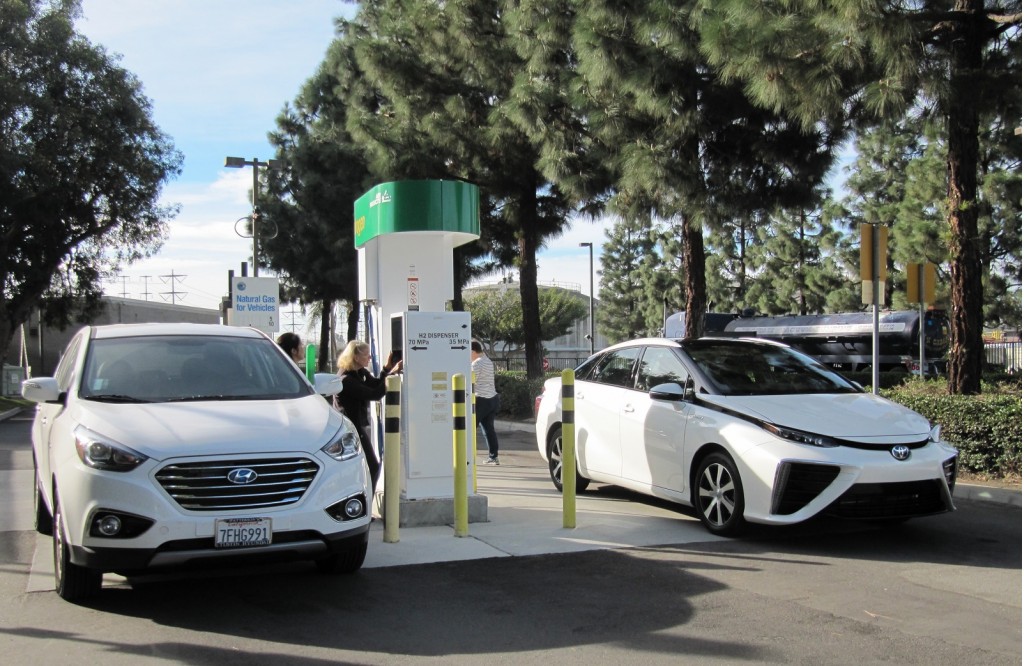
2015 Hyundai Tucson Fuel Cell, 2016 Toyota Mirai at hydrogen fueling station, Fountain Valley, CA
If, say, 150 miles of local use each week can be accomplished with overnight recharging, a hydrogen tank with a 200-mile capacity could last two to four weeks, depending on weekly travel.
This is especially relevant in the early years of hydrogen vehicles, when early adopters may be willing to travel 20 or 30 miles to refuel if they only have to do so once every few weeks or before a long-distance trip.
At a cost of $1 million to $2 million apiece—and dozens of stations required for each municipal region—a plug-in battery may be the key to making hydrogen fuel-cell vehicles more palatable to buyers who live and work further from a hydrogen station than they feel is convenient.
And the more electric cars that are sold, the more awareness of plugging in cars at night will spread, which only reinforces recharging as a "normal" behavior for car owners.

Booster Fuels
(3) Home fuel delivery possible
A number of startups have arisen in Silicon Valley and elsewhere to deliver fuel to customers' vehicles while they're parked, eliminating the need to visit gas stations.
If hydrogen is used more for long trips than for daily use, it's easy to envision that being extended to fuel-cell vehicles, because it will be required less often.
CHECK OUT: Startup That Refills Your Car At Work Or Home Hits Silicon Valley
It may even pencil out economically: the cost of delivering 4 kg of compressed hydrogen once a month to each of a few hundred vehicles in a town may compare favorably to the cost of building and operating an additional hydrogen fueling station.
(4) Electricity remains cheaper per mile
Reducing the per-mile costs of driving likely isn't a priority for most Mercedes buyers; if it were, they'd likely be driving Toyota Prius hybrids instead.
But if a pervasive national hydrogen fueling infrastructure is to arise, large parts of it will have to be created and maintained by the private sector, which will want to see a profit from selling compressed hydrogen as vehicle fuel.

Mercedes-Benz GLC F-Cell prototype
Especially in the early years, hydrogen is likely to cost the same or more per mile as gasoline—and in most localities, cost considerably more per mile than electricity.
Feeding a credit card into a hydrogen pump registers even for Mercedes drivers, unless the company chooses (as Toyota and Hyundai have) to give free fuel to their F-Cell buyers for some period of time.
(5) Less expensive fuel cells
If a fuel-cell powertrain is combined with a battery giving 25 to 40 miles of range, carmakers will be able to project the average miles to be covered by each power source over the vehicle's lifetime.
Today's GLC F-Cell may only offer 25 miles on its battery, but the next generation in 2025 or so could offer 40 or more.
That implies that half or more of the vehicle's total mileage could be done on the battery, with the fuel cell only needing to produce power for half as many miles as in fuel-cell-only vehicles like the Toyota Mirai, Honda Clarity, or Hyundai Tucson Fuel Cell.

First 2016 Toyota Mirai in the U.S. delivered at Roseville Toyota
Sure, those three all have small batteries to capture otherwise wasted energy via regenerative braking, but they're hybrid-sized—1 to 2 kwh—and don't plug in. Nor can they propel the car alone except at steady speeds on flat grounds, and even then only for a mile or so at best.
A GLC F-Class fuel cell stack that only needs to cover half as many miles should be less expensive than those in the Mirai et al. At least in theory.
(6) Plug-in hybrid approach validated
The addition of a plug-in battery pack to a hydrogen fuel-cell vehicle solves exactly the same problems that a plug-in hybrid does.
ALSO SEE: Plug-In Hybrids Are The Best Competitors To Fuel-Cell Vehicles: Here's Why (Oct 2014)
It allows a significant portion of a vehicle's miles to be covered on cheap, easily available grid electricity, while removing the range penalty of an all-electric car.
That's the reason that Chelsea Sexton and other electric-vehicle advocates suggest that plug-in hybrids are by far the most viable short-term competition to fuel-cell vehicles.
They offer similar ranges (300 miles or more), operate as zero-emission vehicles over a significant portion of the miles they cover, and have fast refueling on long-distance trips.
Using gasoline, of course, takes advantage of an existing fuel infrastructure built over more than a century of motor vehicles.

Mercedes-Benz GLC F-Cell prototype
Sure, gasoline plug-in hybrids aren't zero-emission over all their miles, which fuel-cell vehicles are (disregarding the production of the electricity and hydrogen).
But with its maker planning to offer what are effectively a pair of plug-in hybrid GLC models—one with a gasoline engine, the other with a hydrogen fuel cell—the upcoming Mercedes-Benz GLC F-Cell may just provide a market test of which technology buyers prefer.
Not to mention the all-electric ELC version of the same vehicle.
Fascinating times, eh?
_______________________________________
